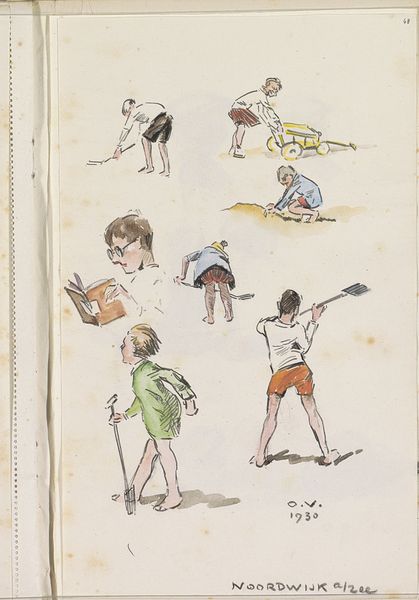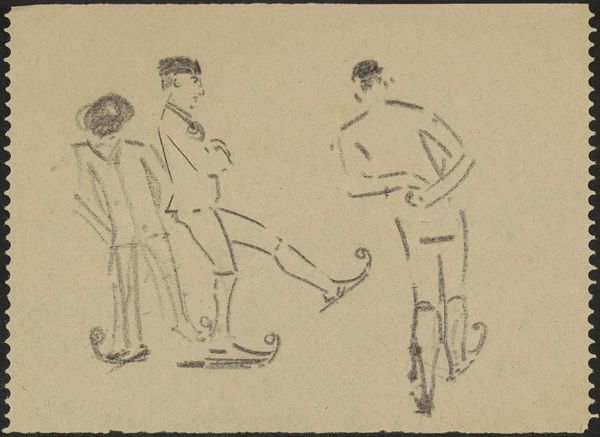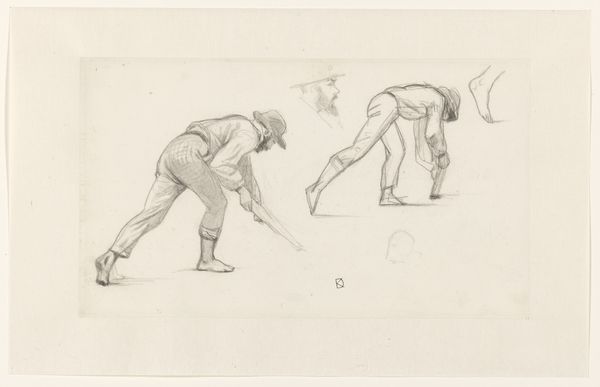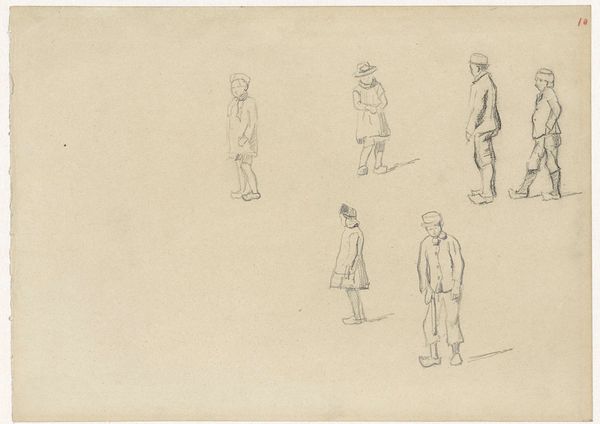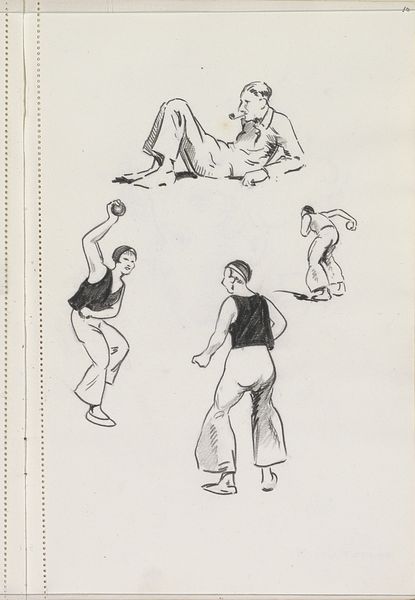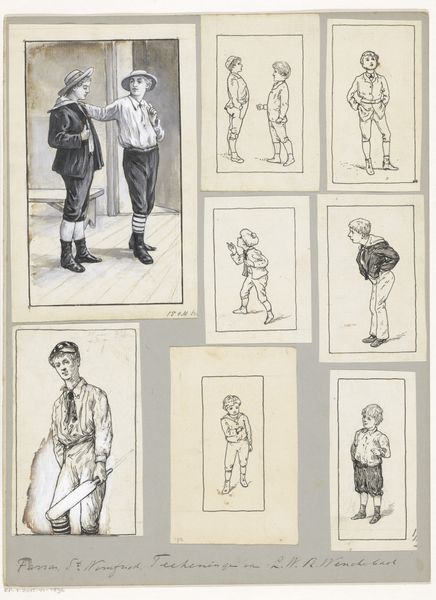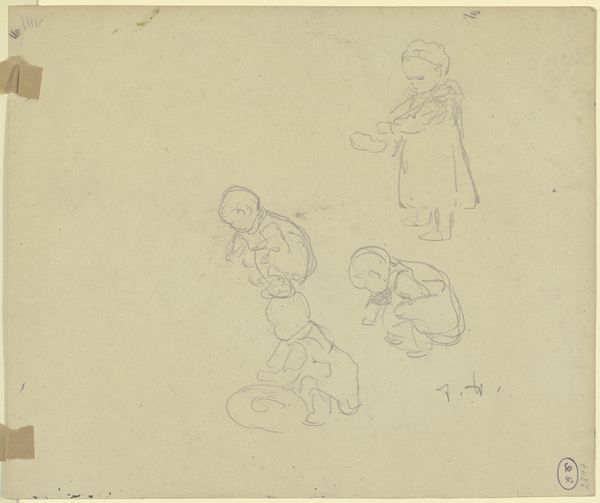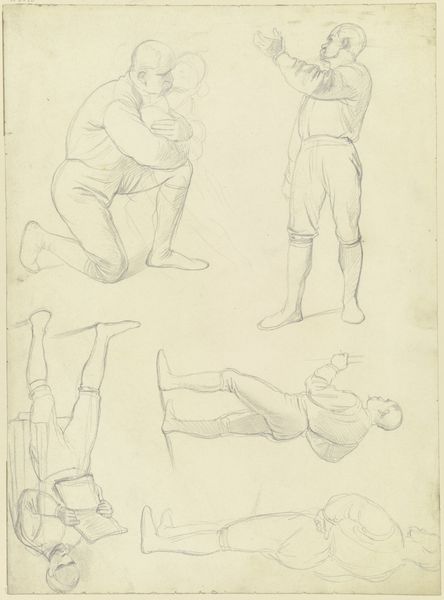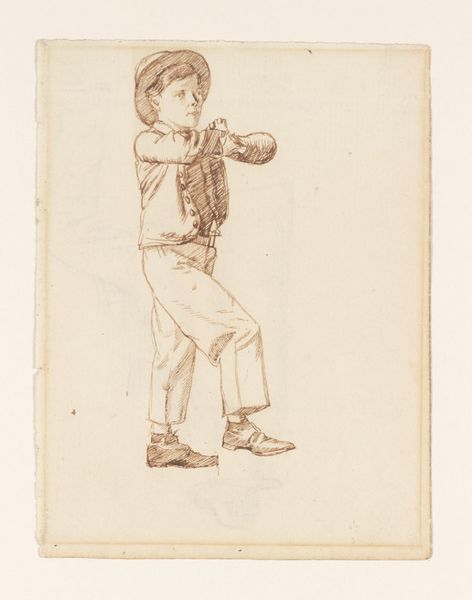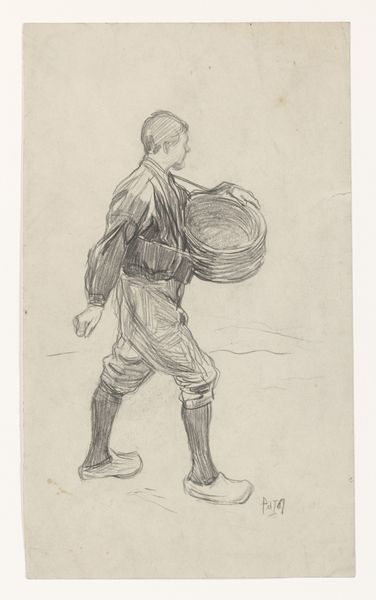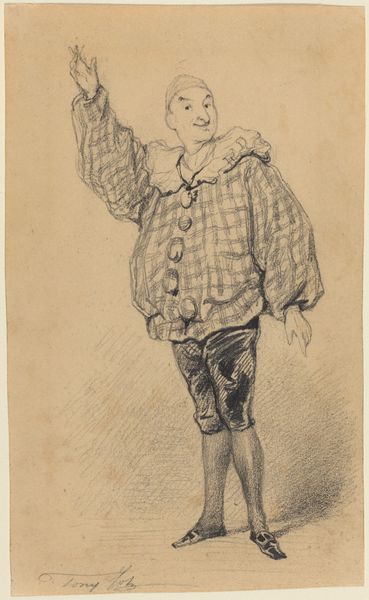
Dimensions: height 116 mm, width 151 mm
Copyright: Rijks Museum: Open Domain
Editor: Here we have "Drie Jongens," or "Three Boys," a drawing from somewhere between 1890 and 1930, created with pen on paper by Totie. There’s something so simple and straightforward about this. How would you interpret this piece, particularly its social context? Curator: Considering it’s a pen drawing, the immediate questions revolve around its production. Was this intended as a study? What kind of pen was used, and what does that say about access to materials and technologies at the time? These factors ground the work in its socio-economic reality. Editor: So, looking at the materials helps us understand the environment the artist was working in? Curator: Precisely! The apparent simplicity can be deceiving. We need to investigate the quality of the paper. Was it mass-produced? High-quality? The labor involved in making both the materials and the artwork. These questions directly relate to the economic forces that shaped artistic creation at that time. And how does that clothing tie into social class markers? Editor: That's really interesting, I never would have considered all those factors, but I can see how material constraints and choices reflect the artist’s position and intentions within their society. Curator: Absolutely, we must critically evaluate not just what is represented, but also how it's materially brought into being and its social circulation. Editor: This approach has really opened my eyes to layers within this artwork I wouldn't have otherwise noticed.
Comments
No comments
Be the first to comment and join the conversation on the ultimate creative platform.

